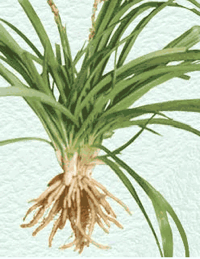Frankincense — traditional gift at this time of the year — is the resin of a tree called Boswellia papryrifera native to the Horn of Africa. Alas, a scientific study in the Journal of Applied Ecology proves that tapping the tree for resin decreases the number of flowers and seeds the tree produces, thus “potentially” harming the regeneration of the frankincense woodlands. Non-tapped trees produce three times more seeds than tapped trees, and those seeds are five times more likely to germinate. The authors say that collectors should make fewer taps per tree and allow long rest periods with no tapping.
Seed relief manual — at last
FAO has just published the conclusions of a workshop on seed relief systems held in May 2003. Why note that, apart from to poke fun at the delay? Because one of the most important conclusions to emerge from the best studies of emergency seed relief is that local informal markets, often focussed on locally important varieties, are often the best sources of seed that will not interfere with local agricultural biodiversity.
Vitality herbs a big draw
 DailyIndia.com reports that “vitality herbs” were the biggest attraction at a recent National Forest Expo in Bhopal, India, and we do not shirk our duty to bring you edited highlights across the entire range of agricultural biodiversity. Will the Indians harvest their herbal Viagras sustainably? Hardly matters; one that caught my eye, because I recognized the Latin name of the common spiderplant of a thousand windowsills, is Chlorophytum borivilianum and it is already being domesticated and grown commercially.
DailyIndia.com reports that “vitality herbs” were the biggest attraction at a recent National Forest Expo in Bhopal, India, and we do not shirk our duty to bring you edited highlights across the entire range of agricultural biodiversity. Will the Indians harvest their herbal Viagras sustainably? Hardly matters; one that caught my eye, because I recognized the Latin name of the common spiderplant of a thousand windowsills, is Chlorophytum borivilianum and it is already being domesticated and grown commercially.
Picture from http://www.allayurveda.com/.
Last of the shepherds
THE day is darkening, and Antonio el Negro, as he is known to his friends in the mountains, heads down to the El Yoni venta in El Burgo for a drink and something to eat. Antonio, as his nickname would suggest, is dark-skinned with black hair, and he has been looking after sheep and goats on this mountain terrain around El Burgo for as long as he can remember. His flock currently numbers 500, although he is the first in a long line of goatherds to have become a shepherd instead. “I prefer sheep,” he smiles.
Go on, give yourself a treat; read the whole romantic piece about the shepherds of Andalucia in Spain. There’s some science there, if you need any.
A user’s view of grassland biodiversity
Sniffing around on biofuels turned up this recent post — Polycultures — at a blog called Muck and Mystery. It gives a farmer’s view of how biodiversity helps him to produce more.
My focus for a couple of years has been on winter active species, those that don’t go dormant when it is cold and the days are short. At my latitude and altitude I can grow grasses year round if I have a good mix. It seldom freezes or snows. Right now my pastures still produce though most of my neighbors have brown swards of dormant grasses. They don’t produce as well as when the days are long, but the forage I produce in the dead of winter is valuable. It reduces the amount of stored forage needed to support my herd, or said another way, it raises my stocking rate. I produce more per acre over the year. With the same land area and inputs I get more production.
There’s no information about who Gary Jones is, or where he farms, but I like the tenor and content of this and a few other posts I read there. I’m adding him to my RSS reader.